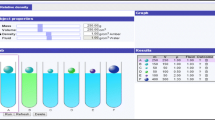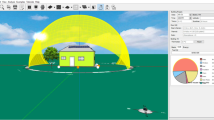Abstract
Experimentation is one of the important strategies used in engineering design to understand the relationship between relevant variables so that they can be manipulated to generate optimized solution for a particular problem or design. The understanding of students’ experimentation strategies allows educators to help students improve their design experiments by providing scaffolds or guidance. The purpose of this study is to investigate students’ experimentation strategies while they work on a design challenge. We performed a concurrent think-aloud to capture students’ verbal description of their actions while they designed using a CAD tool. Using mainly the think-aloud transcripts, we identified and characterized patterns of students’ experimentation strategies. In this study, we were able to identify four main activities whose combinations resulted in five different experimentation strategies performed by students, along with their explanation of their actions. Implications of this study relate to scientific argumentation, learning support, design of practical learning activities, and teacher encouragement.








Similar content being viewed by others
References
Atman, C. J., Adams, R. S., Cardella, M. E., Turns, J., Mosborg, S., & Saleem, J. (2007). Engineering design processes: A comparison of students and expert practitioners. Journal of Engineering Education, 96(4), 359–379.
Blumenfeld, P., Kempler, T., & Krajcik, J. (2006). Motivation and cognitive engagement in learning environments. In R. K. Sawyer (Ed.), The Cambridge handbook of the learning sciences (pp. 475–488). Cambridge: Cambridge University Press.
Brown, P. (2009). CAD: Do computers aid the design process after all? Intersect: The Stanford Journal of Science, Technology and Society, 2(1), 52–66.
Charters, E. (2003). The use of think-aloud methods in qualitative research an introduction to think-aloud methods. Brock Education Journal, 12(2).
Coyle, H. P., Hines, J. L., Rasmussen, K. J., & Sadler, P. M. (2013). Challenges in physical science: Electromagnets (Teacher’s guide). ZENODO.
Crismond, D. (2013). Design practices and misconceptions helping beginners in engineering design. The Science Teacher, 80(1), 50–55.
Crismond, D. P., & Adams, R. S. (2012). The informed design teaching and learning matrix. Journal of Engineering Education, 101(4), 738–797.
Dasgupta, C., Magana, A. J., & Vieira, C. M. (2018). Investigating the affordances of a CAD enabled learning environment for promoting integrated STEM learning. Computers & Education. https://doi.org/10.1016/j.compedu.2018.10.014
de Jong, T. (2006). Technological advances in inquiry learning. Science.
de Jong, T., Linn, M. C., & Zacharia, Z. C. (2013). Physical and virtual laboratories in science and engineering education. Science, 340(6130), 305–308.
Dewey, J. (1913). Interest and effort in education. Houghton Mifflin.
Dorst, K., & Cross, N. (2001). Creativity in the design process: Co-evolution of problem—Solution. Design Studies, 22(5), 425–437.
Driver, R., Asoko, H., Leach, J., Scott, P., & Mortimer, E. (1994). Constructing scientific knowledge in the classroom. Educational Research, 23(7), 5–12.
Driver, R., Newton, P., & Osborne, J. (2000). Establishing the norms of scientific argumentation in classrooms. Science Education, 84(3), 287–312.
Dutson, A. J., Todd, R. H., Magleby, S. P., & Sorensen, C. D. (1997). A review of literature on teaching engineering design through project-oriented capstone courses. Journal of Engineering Education, 86(1), 17–28.
Eng, N. L., Bracewell, R. H., & Clarkson, P. J. (2009). Concept diagramming software for engineering design support: a review and synthesis of studies. In ASME 2009 International Design Engineering Technical Conferences and Computers and Information in Engineering Conference (pp. 1221–1234). American Society of Mechanical Engineers.
Gentner, D., & Smith, L. (2012). Analogical reasoning. Encyclopedia of human behavior, 1, 130–136.
Groover, M., & Zimmers, E. W. J. R. (1983). CAD/CAM: Computer-aided design and manufacturing. Pearson Education.
Hsu, P. S., Van Dyke, M., Chen, Y., & Smith, T. J. (2015). The effect of a graph-oriented computer-assisted project-based learning environment on argumentation skills. Journal of Computer Assisted Learning, 31(1), 32–58.
Kalyuga, S. (2007). Expertise reversal effect and its implications for learner-tailored instruction. Educational Psychology Review, 19(4), 509–539.
Kolodner, J. L. (2008). Project-based inquiry science. Armonk: It's About Time.
Kolodner, J. L., Camp, P. J., Crismond, D., Fasse, B., Gray, J., Holbrook, J., & Ryan, M. (2003). Problem-based learning meets case-based reasoning in the middle-school science classroom: Putting learning by design (tm) into practice. The Journal of the Learning Sciences, 12(4), 495–547.
Lim, K. H., Buendía, G., Kim, O. K., Cordero, F., & Kasmer, L. (2010). The role of prediction in the teaching and learning of mathematics. International Journal of Mathematical Education in Science and Technology, 41(5), 595–608.
National Research Council. (2012). A framework for K-12 science education: Practices, crosscutting concepts, and core ideas. Washington, DC: The National Academies Press. https://doi.org/10.17226/13165.
Pahl, G., & Beitz, W. (2013). Engineering design: A systematic approach. London: Springer Science & Business Media.
Patton, M. Q. (2015). Qualitative research & evaluation methods: Integrating theory and practice (4th ed.). Thousand Oaks: Sage.
Purzer, S. S., Goldstein, M. H., Adams, R. S., Xie, C., & Nourian, S. (2015). An exploratory study of informed engineering design behaviors associated with scientific explanations. International Journal of STEM Education, 2(1), 9.
Romero-Zaldivar, V., Pardo, A., Burgos, D., & Delgado, C. (2012). Monitoring student progress using virtual appliances: a case study. Computers in Education, 58(4), 1058–1067.
Schauble, L. (1990). Belief revision in children: The role of prior knowledge and strategies for generating evidence. Journal of Experimental Child Psychology, 49(1), 31–57.
Schauble, L., Klopfer, L. E., & Raghavan, K. (1991). Students’ transition from an engineering model to a science model of experimentation. Journal of Research in Science Teaching, 28(9), 859–882.
Seah, Y. Y., Vieira, C., Dasgupta, C., & Magana, A. J. (2016). Exploring students’ experimentation strategies in engineering design using an educational CAD tool. In Frontiers in Education Conference (FIE), 2016 IEEE (pp. 1–5). IEEE.
Seah, Y., Magana, A., Hartman, N., & Laux, D. (2017). Exploring student experimentation strategies in engineering design using an educational CAD tool (master’s thesis). ProQuest Dissertations and Theses.
Seepersad, C. C., Green, M. G., & Schmidt, K. J. (2006). Learning journals as a cornerstone for effective experiential learning in undergraduate engineering design courses. In Proceedings of 2006 ASEE Annual Conference.
Simon, S., Johnson, S., Cavell, S., & Parsons, T. (2012). Promoting argumentation in primary science contexts: An analysis of students' interactions in formal and informal learning environments. Journal of Computer Assisted Learning, 28(5), 440–453.
Sobek, D. K. (2002). Use of journals to evaluate student design processes. In Proceedings of the American Society of Engineering Education Conference (pp. 16–19).
Worsley, M., & Blikstein, P. (2014). Analyzing engineering design through the lens of computation. Journal of Learning Analytics, 1(2), 151–186.
Xie, C., Schimpf, C., Chao, J., Nourian, S., & Massicotte, J. (2018). Learning and teaching engineering design through modeling and simulation on a CAD platform, Computer Applications in Engineering Education, 26(4), 824–840. https://doi.org/10.1002/cae.21920
Yang, M. C. (2009). Observations on concept generation and sketching in engineering design. Research in Engineering Design, 20(1), 1–11.
Zeidler, D. L. (1997). The central role of fallacious thinking in science education. Science Education, 81(4), 483–496.
Acknowledgements
This research was supported in part by the U.S. National Science Foundation under the award DLR 1503436. Any opinions, findings, conclusions, and recommendations expressed in this paper, however, are those of the authors and do not necessarily reflect the views of the funding agency. In addition, we would like to acknowledge the Concord Consortium for providing access to Energy3D.
Funding
This research was funded by the U.S. National Science Foundation under the award DLR 1503436.
Author information
Authors and Affiliations
Corresponding authors
Ethics declarations
Ethical Approval
All procedures performed in studies involving human participants were in accordance with the ethical standards of the institutional and/or national research committee and with the 1964 Helsinki declaration and its later amendments or comparable ethical standards.
Informed Consent
Informed consent was obtained from all individual participants included in the study.
Conflict of Interest
The authors declare that they have no conflict of interest.
Rights and permissions
About this article
Cite this article
Seah, Y.Y., Magana, A.J. Exploring Students’ Experimentation Strategies in Engineering Design Using an Educational CAD Tool. J Sci Educ Technol 28, 195–208 (2019). https://doi.org/10.1007/s10956-018-9757-x
Published:
Issue Date:
DOI: https://doi.org/10.1007/s10956-018-9757-x




